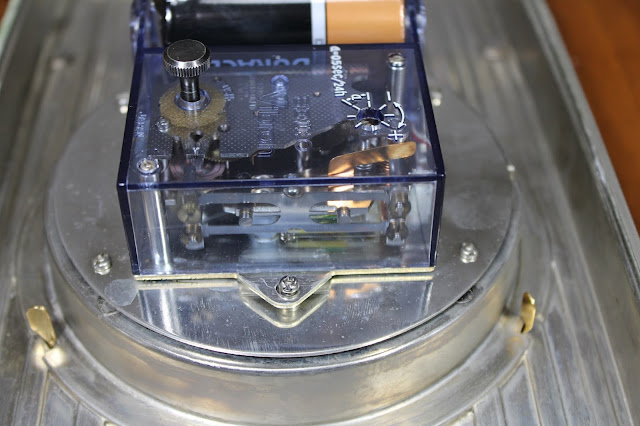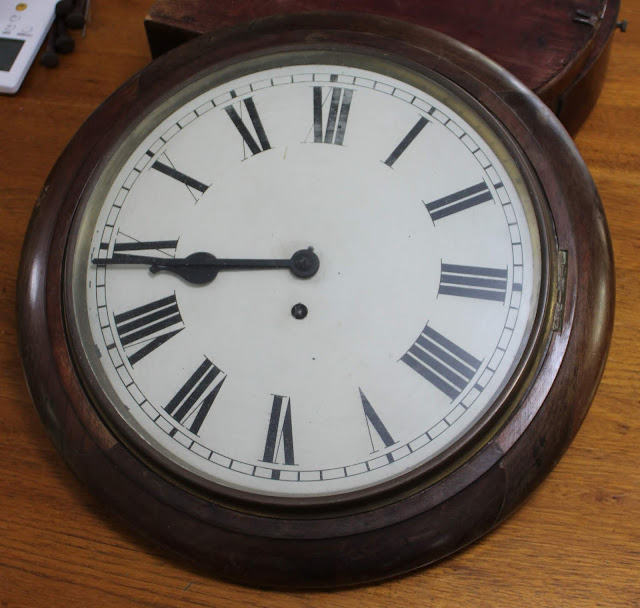Seiko Vibron Tuning Fork Clock c1960s-70s
Significance
A Seiko clock using a tuning fork and mechanical movement, powered by a battery and single transistor drive. Made in Japan in the 1960s to early 70s in the brief period after transistors became available and before they were replaced by quartz clocks.Description
The Seiko Vibron VBZ-208 is an electronic-mechanical, 6-jewel clock that uses a 150 Hz vibration, H-shaped, double-ended tuning fork. The tuning fork element was developed by Seiko to be virtually immune to changes in temperature being made of a special alloy. A single transistor switch drives a solenoid to magnetically excite the tuning fork. The other end of the tuning fork has two magnets, along with a rotating disk that constitutes a synchronous motor that then drives the gears set to the hands. The movement offers extremely high timekeeping precision.Tuning fork clocks and watches were developed in Switzerland by Bulova in the mid-1950s when transistors became available. The Accutron watch movement was used in watches and desk clocks.
The tuning fork movement was patented by Max Hetzel of Bulova in 1953. A variation was patented by Jeco, Japan, in 1963 that relied on the Bulova patent. Jeco movements were used by Smiths, England, as well in clocks made by Jeco. It seems quite unusual that the Seiko Vibron has no patents on the movement, either its own, or Bulova and Jeco.
Tuning fork clocks and watches use a sweep second hand, like mechanical spring movements, rather than a stepped second hand like most quartz movements. The little motor drives the time wheels continuously, rather than impulse; see the video below.
Notes
US3277644A Tuning fork timepiece, Jeco 1963. Japanese tuning fork clock with a transistor switch.US2971323A Electronically-controlled timepiece Max Hetzel 1953 Bulova Swiss tuning fork clock with a transistor switch
https://en.wikipedia.org/wiki/Tuning_fork
http://physics.case.edu/about/history/antique-physics-instruments/tuning-fork-clock/ 100 Hz 1866 mechanical escapement.



Comments
Post a Comment